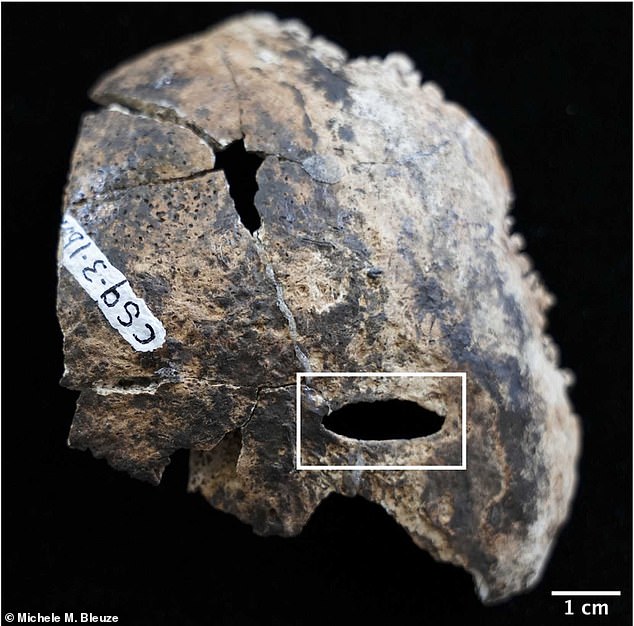
"Archaeologists Uncover Ancient Mayan Ritual Artifacts in ‘Blood Cave’"
Gruesome Evidence of Maya Human Sacrifices Found in Guatemalan “Blood Cave”
(Image 1: Archaeologists examining a skull with a lesion from the cave)
Hundreds of human bones discovered in Cueva de Sangre (“Blood Cave”) in Guatemala point to ritual sacrifices by the ancient Maya over 2,000 years ago. Located beneath the Dos Pilas archaeological site, the cave—flooded most of the year—was used by the Maya between 400 BC and AD 250. A recent analysis of remains reveals chilling evidence of dismemberment and violent trauma, suggesting the cave served as a ceremonial site for offerings to appease the gods.
Traumatic Clues and Ritual Artifacts
Initial surveys in the 1990s uncovered scattered bones with injuries indicative of sacrificial practices. Recent studies by forensic anthropologist Ellen Frianco and bioarchaeologist Michele Bleuze identified hatchet-like tool marks on a skull fragment and a child’s hip bone. The remains, found alongside ritual objects like obsidian blades and red ochre pigment, were arranged in eerie configurations, including a stack of four skull caps. Frianco notes these findings strongly suggest deliberate sacrifice rather than burial or battle casualties.
(Image 2: The entrance to Cueva de Sangre, a narrow cave leading to a subterranean pool)
A Sacred Space for Chaac, the Rain God
The cave’s seasonal accessibility—only during the dry months—aligns with Maya rituals tied to agricultural cycles. Researchers hypothesize sacrifices were linked to Chaac, the rain deity, to ensure bountiful harvests. Modern Maya descendants still visit caves each May 3 (Day of the Holy Cross) to pray for rain, though without human offerings. The ancient sacrifices, however, reflect a desperate plea during droughts or crises, common reasons for Maya rituals.
Unanswered Questions and Future Research
While the grisly evidence points to ritual killings, researchers aim to uncover the victims’ identities. DNA and isotope analyses will explore their origins, diets, and environments. “Our focus is understanding who these people were and why they were treated differently,” Bleuze explained. Such insights could reveal whether they were elites, captives, or volunteers.
(Image 3: Ruins of Dos Pilas, a Maya city linked to the Blood Cave rituals)
Maya Civilization and Sacrificial Practices
The Maya, known for complex rituals, viewed caves as portals to the underworld. Human sacrifice, though not daily practice, was a desperate measure during turmoil. The Blood Cave’s offerings—hidden in a sacred, water-filled chamber—underscore its spiritual significance.
Conclusion
The Blood Cave findings deepen our understanding of Maya spirituality and crisis response. As research continues, this site may unveil more secrets about the lives and beliefs of one of history’s most enigmatic civilizations.
(Word count: ~600)


